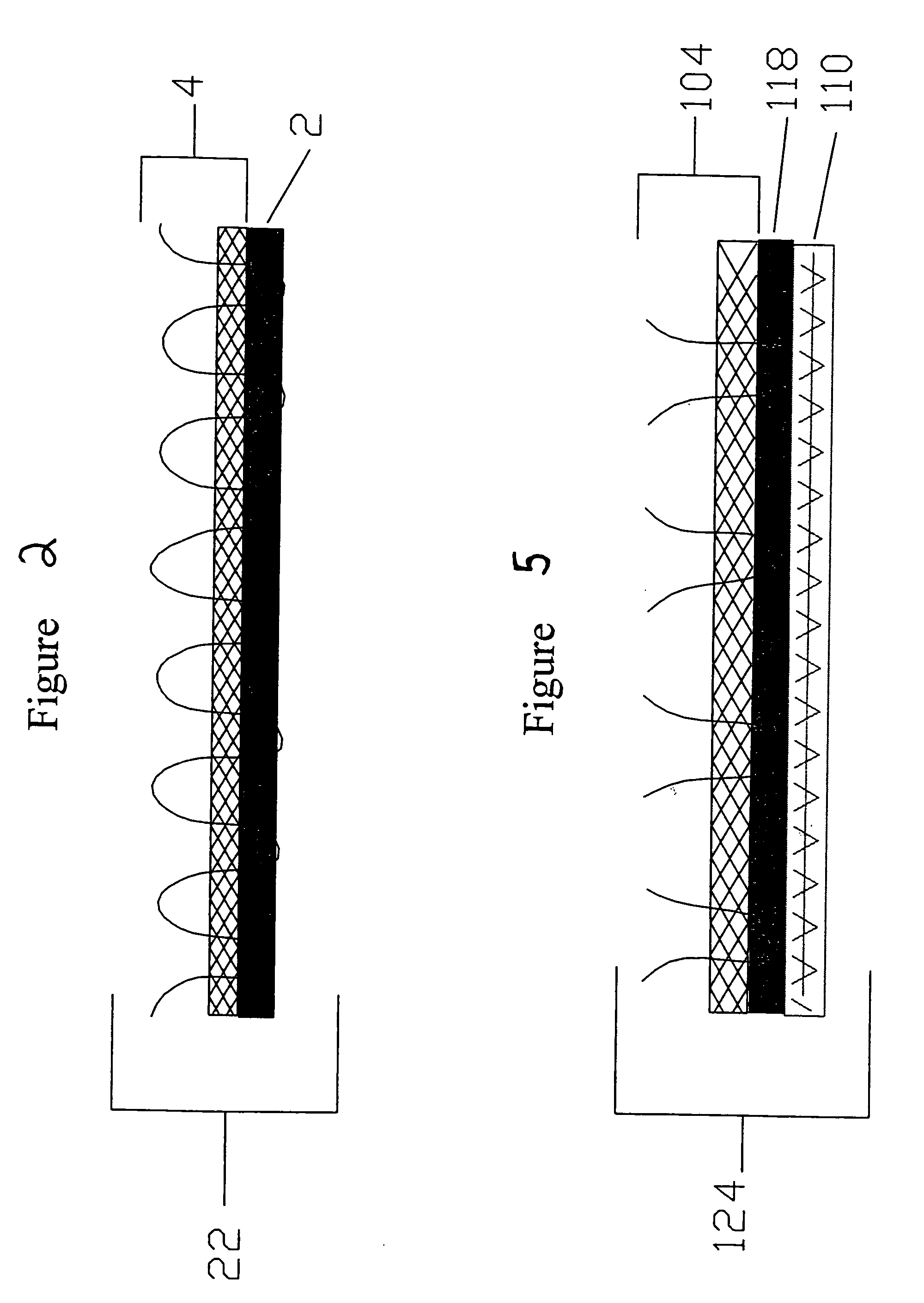High-strength, low-cost, recyclable backing for fabrics and method for making same
a technology of fabric backing and fabric, which is applied in the field of fabric backing, can solve the problems of increasing operating costs, reducing the strength of latex-based products, so as to achieve the effect of superior bundle penetration/fiber lock, easy recycling, and strong suppor
- Summary
- Abstract
- Description
- Claims
- Application Information
AI Technical Summary
Benefits of technology
Problems solved by technology
Method used
Image
Examples
Embodiment Construction
[0028] While the invention may be susceptible to embodiment in different forms, there is shown in the drawings, and herein will be described in detail, specific embodiments with the understanding that the present disclosure is to be considered an exemplification of the principles of the invention, and is not intended to limit the invention to that as illustrated and described herein.
[0029] A backing material is a material applied to a fabric, such as carpets, carpet tiles, moldable carpets, liners, covers, mats, moldable mats, rugs, and other applications to obtain fiber-lock performance, tuft-lock performance, increased stability and structural integrity, non-skid characteristics, and / or flame retardancy. The backing material of the preferred embodiment of the present invention has basic ingredients of high melt index low-density polyethylene (“LDPE”) and flexibilizers. Other LDPE or high-density polyethylene (“HDPE”) can be used for increased strength and as a polymeric cost-redu...
PUM
| Property | Measurement | Unit |
|---|---|---|
| specific gravity | aaaaa | aaaaa |
| temperature | aaaaa | aaaaa |
| temperature | aaaaa | aaaaa |
Abstract
Description
Claims
Application Information
 Login to View More
Login to View More - R&D
- Intellectual Property
- Life Sciences
- Materials
- Tech Scout
- Unparalleled Data Quality
- Higher Quality Content
- 60% Fewer Hallucinations
Browse by: Latest US Patents, China's latest patents, Technical Efficacy Thesaurus, Application Domain, Technology Topic, Popular Technical Reports.
© 2025 PatSnap. All rights reserved.Legal|Privacy policy|Modern Slavery Act Transparency Statement|Sitemap|About US| Contact US: help@patsnap.com



